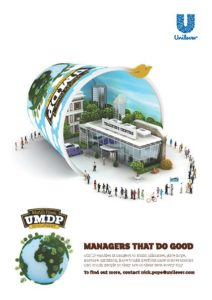
Given the scope and depth of their effect on an organization, managers should be a developmental priority. Instead, they’re often ignored or underappreciated, causing business to suffer as a result.
by Sebastian Bailey
February 3, 2015
Great managers are the linchpins of organizational success. They motivate, coach, discipline and counsel. But despite the value they bring, this crucial cohort receives precious little by way of learning investment.
A 2013 study by University of Utah’s David Eccles School of Business and Stanford University researched more than 23,000 workers and 1,900 bosses. Results found that replacing a poor manager with a great one increased productivity by 12 percent — far greater ROI than any IT investment or marketing campaign. According to the Association for Talent Development’s — formerly the American Society of Training and Development — 2012 trends report, U.S. businesses spend an average of $1,195 on manager training per year. This equates to less than the amount spent on each person’s chair, desk and computer.
What causes such woeful underinvestment? Michele Isaacs, vice president of talent and development at Thomson Reuters, said there is a prevailing assumption that high performers who are promoted to management will figure out how to excel at managing on the job. “They will eventually work it out, but it’s a slow process,” she said. “Formal training around how to coach, give feedback, delegate and so on speeds up their success and makes everyone who works for them better off.”
Hey, Don’t Take Us for Granted
Nick Pope, global learning director at Unilever, agreed that overconfidence in management capability can get in the way of investment. This is further compounded by leaders’ lack of confidence in training. “There’s a perception that you go on a course, if you’re lucky you have a great lunch but not much transfers back into the workplace,” he said. Add that to a tendency to underestimate managers’ effect on engagement and performance and a lack of time and budget, and it’s no wonder management development ends up on the backburner.
Two things will convince senior leaders to invest in managers: trouble and opportunity. Isaacs seized on both. “When Thomson acquired Reuters, it was a period of huge change with many issues to resolve. Consequently, the time and effort we spent developing our managers began to slip down the priority list,” she said. “Later, when things were settled, we realized our managers weren’t as strong as they needed to be, and we believed it could be impacting our company performance.”
Project post-mortems revealed a lack of feedback and a culture of shying away from conflict. Isaacs said leaders worried this would affect quality and, ultimately, customers’ perceptions of the company. This convinced the executive team to prioritize management development on the organization’s agenda and invest.
“You have to find the pain,” Isaacs said. “You have to think, ‘what is the problem within the organization that I can help solve by developing capabilities?’ ” If there is no problem, learning can become less of a priority. “I’ve had the good fortune to work in organizations where there are problems to solve. When things are going well it’s easy to get complacent.”
Difficult times offer the opportunity to make a real change, and Pope said the ability to solve challenges can be a powerful persuasion tool. “Organizational challenges usually boil down to conversations between a manager and their employees,” he said. “I was able to show [leadership] how line manager capability unlocked some of the things we’d been struggling with.”
However, at Unilever it was harder to find a burning platform. Pope said engagement results were good, and the company was in the top quartile for management capability; those weren’t good enough reasons for wholesale change. Instead, the business strategy — double in size while reducing the company’s environmental footprint and increasing its positive social effect — provided the incentive. “The question that prompted the Unilever Management Development Program was: ‘Do we have the right quality of talent to lead an 80 billion euro business?’ ”
This opportunity, coupled with the fact that world-class development is a key part of Unilever’s employer brand, prompted a complete management development overhaul. Unilever went from seven separate programs to one globally consistent approach with the UMDP, which focuses on seven vital management talents: relate, energize, direct, execute, coach, thrive and innovate.
Implemented in 2013, the UMDP plugged a development gap for the core management population in Unilever’s talent development parlance — those at the “perform” stage who had not been identified as high potential yet. Offering this audience quality management development not only helps to “move the middle,” but it also avoids the perception the best investment is saved for the high potentials.
“Clearly it’s important to invest in your big-bet talent, but it shouldn’t be at the expense of your wider population,” Pope said. “It’s important to provide these development opportunities to everyone.” As well as appealing to his personal value of fairness, he said equal investment reflects broader societal trends for trust and transparency, especially from millennials.
Developing the Middle
Three principles underpin both Unilever and Thomson Reuters’ management development approaches. First, approaches need to be globally consistent and scalable. Isaacs said the Managing at Thomson Reuters’ program she implemented in 2013 had to work in any culture and in any language for all experience levels whether the employee had 20 years or two months on the job. “It was a huge challenge.”
For Unilever’s 15,500-strong global management population, consistency was also key, but Pope didn’t want a “sausage factory. Global scalability and customization are bad partners — you often end up with a bland layer cake approach where you have a little bit of customization, but it doesn’t taste very nice.”
Both companies solved the problem by offering a distributed approach where managers having shared a consistent core experience can select bite-sized learning options that best fit their development needs. This mass-customization approach increased participants’ engagement and meant that investment was used wisely. “Not everybody has the same capability gap,” Isaacs said. “Money invested on a gap that doesn’texist is not well spent.”
The second programmatic principle is leadershipinvolvement. A huge factor in any program’s success is the extent to which people see the opportunities to apply what they learn. Further, manager support is crucial to help people to identify these opportunities and sustain learning through observations, feedback and coaching.
Unilever invested in a program for managers of managers, familiarizing them with UMDP content and giving them the skills to support their direct reports’ learning. At Thomson Reuters, the principle of leaders teaching leaders was formally embedded into the program, with executives involved in the design and delivery. “We had a steering committee of five really senior people in the organization who met every other week for two hours helping us design it,” Isaacs said.
Third, both businesses sustained learning formally and informally through post-event scaffolding such as missions that encourage people to try out what they’ve learned and boosters, instructor-led sessions in which people share their successes and challenges, as well as peer coaching and Internet-based social learning. “Often the best value people get from programs is talking about common issues and sharing best practice,” Pope said. “It sounds simple, but in reality, people don’t get a chance. We used a peer coaching mechanism to build capability and encourage people to have better quality conversations.”
As Unilever’s UMDP was not mandatory, upfront engagement was pivotal to its success. Pope achieved this by tapping into Unilever’s organizational psyche as a great marketer. “It’s no use working in a marketing company and having a bland email inviting you on a course,” he said. Instead, invitations riffed on Unilever’s external marketing and world-famous brands (Figure 1).

Figure 1: Unilever played off its world-famous brands, such as Ben & Jerry’s ice cream, to draw its employees into the Unilever Management Development Program.
People thought: That’s cool, that’s different; it set an expectation for the program itself.” Interest piqued, and managers were hooked with what Pope calls “a deep moment of insight” early on in the program. “Learning competes with people’s busy lives,” he said. “Trying to get someone to pay attention to themselves is very difficult.” The a-ha moment came from a diagnostic and a management net promoter score. Thediagnostic tool was the initial step to find areas of strengths and weaknesses to better hone in on appropriate development areas for the manager. The management net promoter score gauged the extent to which a manager’s direct reports would recommend them.
The Bottom-Line Benefits
The approach paid off. Twelve months later, the UMDP accounts for 28 percent of Unilever’s general skills budget, up from 11 percent at the beginning. “Unilever employees vote with their feet. If a program is no good, people won’t take it,” Pope said. In 11 of 12 countries surveyed, 100 percent of participants would recommend the program to their colleagues — the 12th country’s score was 98 percent — and participants report sustained transfer three months later. Pope said he now aims to correlate managers’ scores on the UMDP diagnostic with their team’s engagement and their own end-of-year performance.
At Thomson Reuters, initial reaction and transfer feedback was also positive, and qualitative data indicates a positive effect on managers and their employees. “Once a week I hear stories like, ‘I used some of the techniques with my worst performer and now they’re my top performer,’ ” Isaacs said. The next stage is to quantify the effect on engagement and performance by looking at the annual Manager Effectiveness Survey. Isaacs is positive there will be an increase. “When people have an issue and you can deliver answers, it has to make a difference.”
Pope said overhauling Unilever’s management development program threw up some pertinent learning that applies to any wholesale change. For instance, it’s important to have the pilot last at least 12 months — Isaacs agrees. Also, an initial mixed response isn’t necessarily bad news. “You need to have an edge and a point of view that people react to,” Pope explained. “If you’re not getting some noise from a new program you need to be careful that it’s not just vanilla.”
Realizing the most effective programs don’t always work straight out of the box is important and challenging, especially when faced with executive teams whose main concern is reaction feedback. Shaking up the status quo can be daunting because people have invested not just in the program but in their reputations. For Pope, persistence paid off. “You have to keep the faith, own the narrative and believe that it’s the right thing to do. I’m pleased to say that we got to a great result.”



